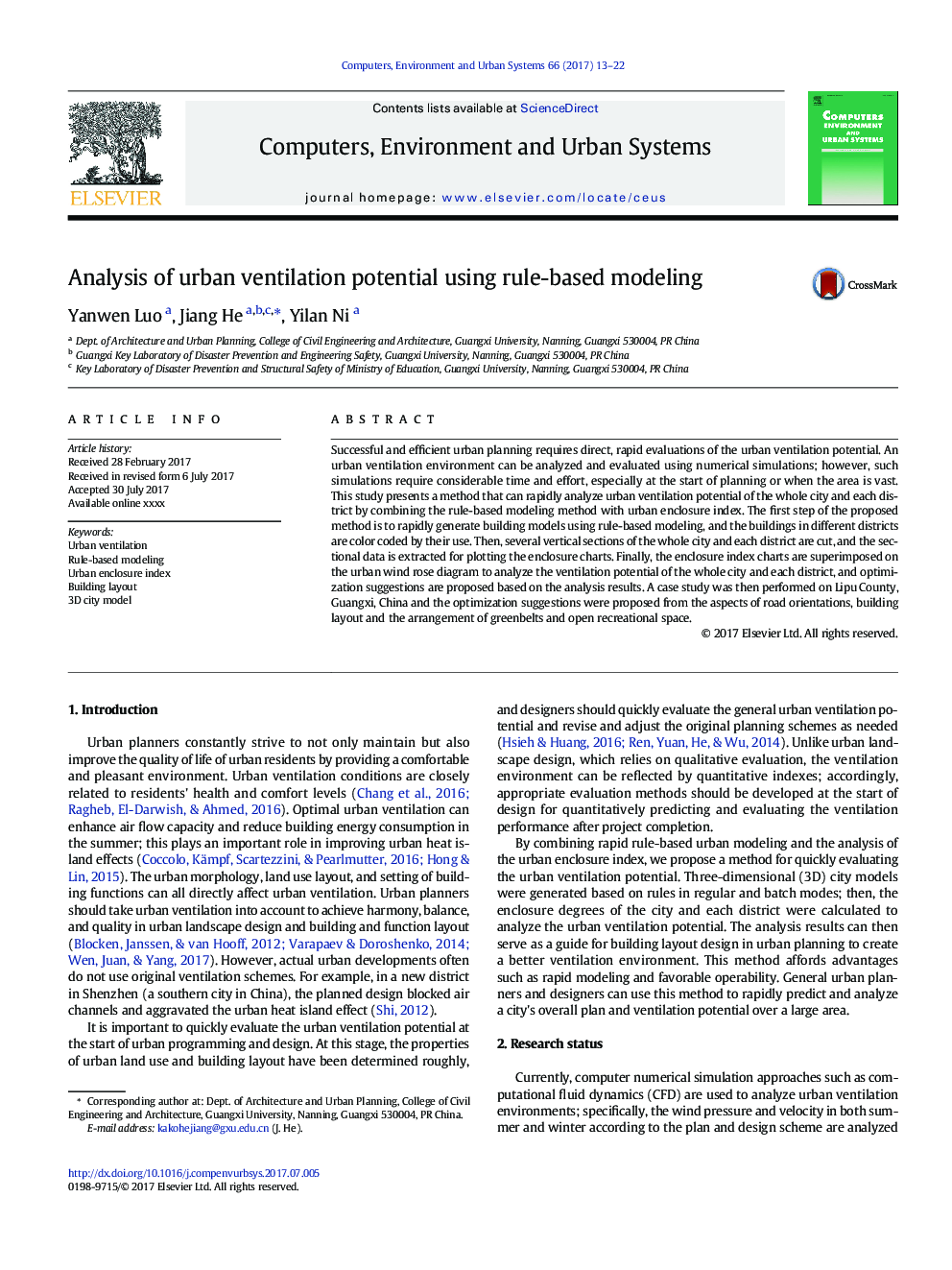| کد مقاله | کد نشریه | سال انتشار | مقاله انگلیسی | نسخه تمام متن |
|---|---|---|---|---|
| 4965197 | 1448224 | 2017 | 10 صفحه PDF | دانلود رایگان |
عنوان انگلیسی مقاله ISI
Analysis of urban ventilation potential using rule-based modeling
ترجمه فارسی عنوان
تجزیه و تحلیل پتانسیل تهویه هوای شهر با استفاده از مدل سازی مبتنی بر قانون
دانلود مقاله + سفارش ترجمه
دانلود مقاله ISI انگلیسی
رایگان برای ایرانیان
کلمات کلیدی
تهویه شهر مدل سازی مبتنی بر قانون، شاخص محوطه شهری، طرح ساختمان مدل شهر سه بعدی،
ترجمه چکیده
برنامه ریزی شهری موفق و کارآمد مستلزم بررسی مستقیم و سریع پتانسیل تهویه شهر است. یک محیط تهویه شهری می تواند با استفاده از شبیه سازی های عددی تجزیه و تحلیل و ارزیابی شود؛ با این حال، چنین شبیه سازی ها نیاز به زمان و تلاش زیادی دارند، به ویژه در ابتدای برنامه ریزی و یا زمانی که منطقه گسترده است. این مطالعه یک روش ارائه می دهد که می تواند با استفاده از روش مدل سازی مبتنی بر قاعده با شاخص محدوده شهر، بتواند ظرفیت تهویه شهر در کل شهر و هر ناحیه را به سرعت تحلیل کند. اولین گام روش پیشنهادی این است که به سرعت تولید مدل های ساختمان با استفاده از مدل سازی مبتنی بر قانون، و ساختمان های در مناطق مختلف با استفاده از رنگ کد گذاری شده اند. سپس، چند بخش عمودی کل شهر و هر ناحیه برش داده می شود و داده های مقطعی برای ترسیم نقشه های محوطه استخراج می شود. در نهایت، نمودار شاخص محدوده در نمودار رشد رو به رشد شهر قرار می گیرد تا توانایی تهویه دهی کل شهر و هر منطقه را تحلیل کند و پیشنهادات بهینه سازی براساس نتایج تجزیه و تحلیل ارائه شده است. سپس مطالعه موردی در شهرستان لیپو، گوانگشی، چین انجام شد و پیشنهادات بهینه سازی از جنبه های جهت گیری جاده، طرح ساختمان و ترتیب سبدهای سبز و فضای تفریحی باز پیشنهاد شده است.
موضوعات مرتبط
مهندسی و علوم پایه
مهندسی کامپیوتر
نرم افزارهای علوم کامپیوتر
چکیده انگلیسی
Successful and efficient urban planning requires direct, rapid evaluations of the urban ventilation potential. An urban ventilation environment can be analyzed and evaluated using numerical simulations; however, such simulations require considerable time and effort, especially at the start of planning or when the area is vast. This study presents a method that can rapidly analyze urban ventilation potential of the whole city and each district by combining the rule-based modeling method with urban enclosure index. The first step of the proposed method is to rapidly generate building models using rule-based modeling, and the buildings in different districts are color coded by their use. Then, several vertical sections of the whole city and each district are cut, and the sectional data is extracted for plotting the enclosure charts. Finally, the enclosure index charts are superimposed on the urban wind rose diagram to analyze the ventilation potential of the whole city and each district, and optimization suggestions are proposed based on the analysis results. A case study was then performed on Lipu County, Guangxi, China and the optimization suggestions were proposed from the aspects of road orientations, building layout and the arrangement of greenbelts and open recreational space.
ناشر
Database: Elsevier - ScienceDirect (ساینس دایرکت)
Journal: Computers, Environment and Urban Systems - Volume 66, November 2017, Pages 13-22
Journal: Computers, Environment and Urban Systems - Volume 66, November 2017, Pages 13-22
نویسندگان
Yanwen Luo, Jiang He, Yilan Ni,
